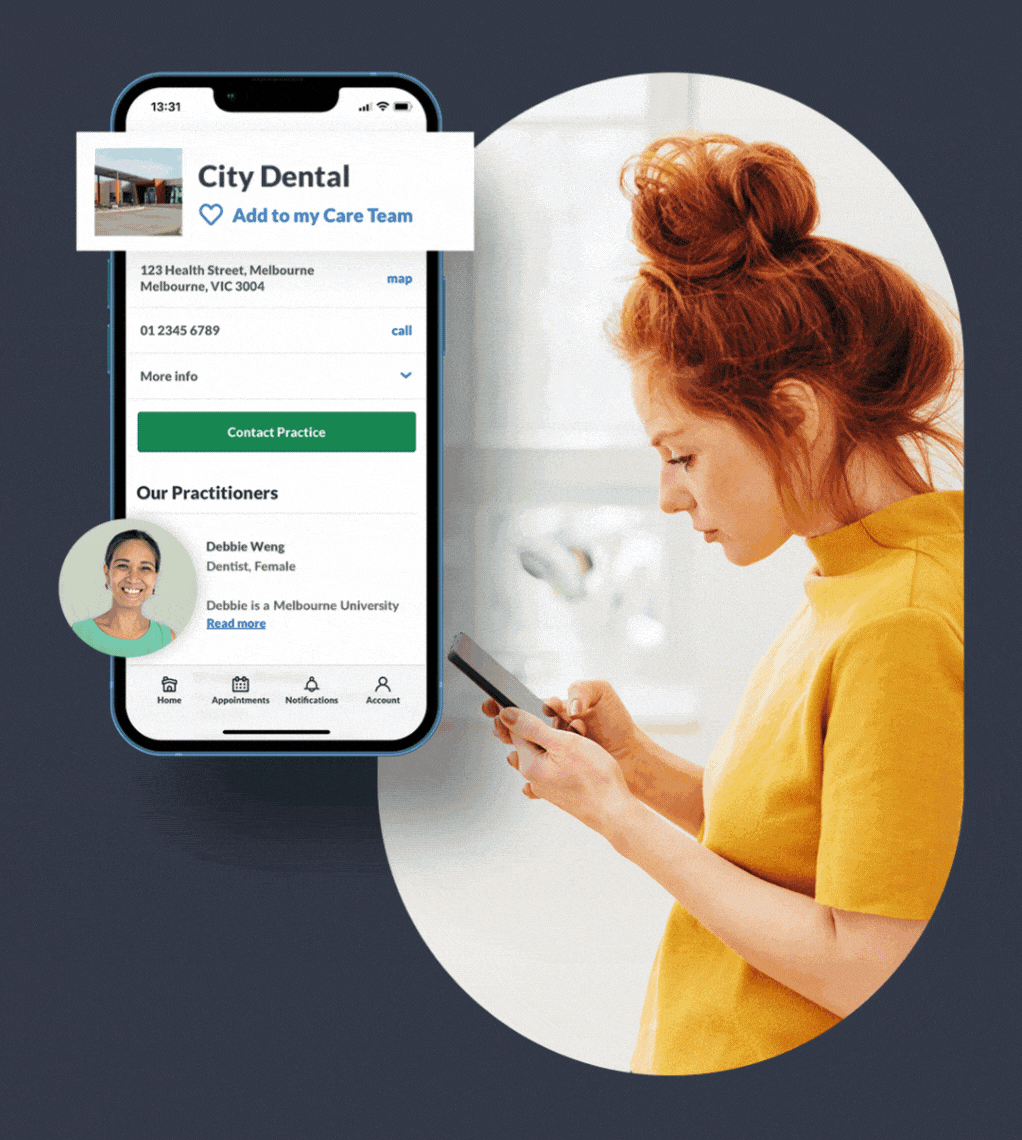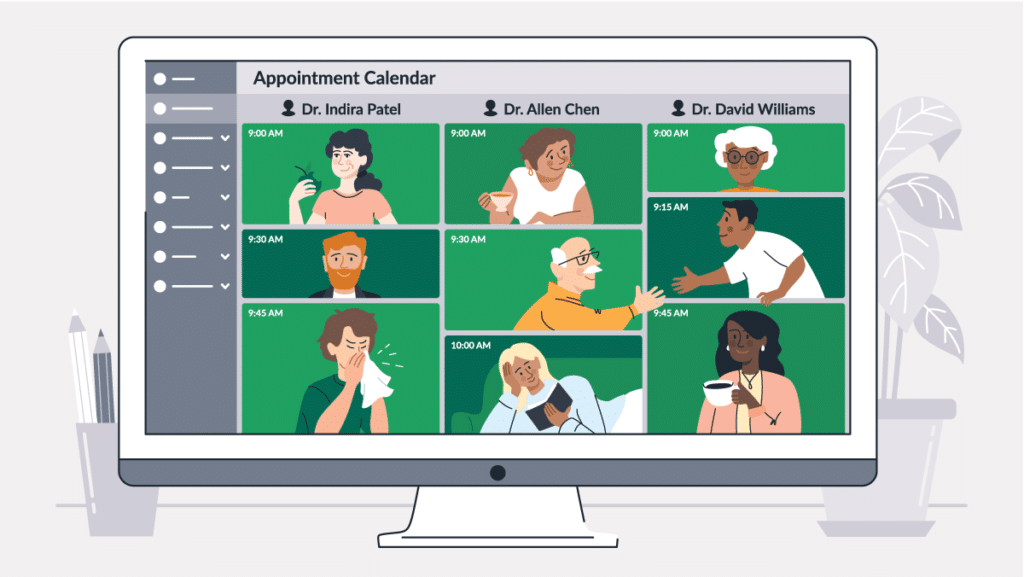In your day-to-day life, there are businesses that you visit weekly and monthly, and you continue to buy from them year after year. Think about your favourite supermarket, coffee shop, or petrol station. How much money have you spent at these locations over the many years you’ve shopped there?
Sometimes you may not even be sure why you chose to shop there, except for convenience. In other situations you might feel a strong sense of loyalty to the business or the people running it. This is particularly common in businesses such as hair stylists, cafes, or even healthcare professions, like your dentist. It’s important for your dental practice to work towards building that sense of loyalty with patients. It’s the best way to improve patient retention and keep them coming back.

“The more you retain and keep your existing patients, the less you will spend on marketing to new patients and the sooner you can grow your business into a profit centre.”
Dr Thivagar “Tiv” Nirmalan, Dental Business Coach and Principal Dentist
Who Brings You the Most Profits?
When you think about your dental business, you might be surprised to find that a lot of the recurring revenue comes from a much smaller percentage of your patients than you realise.
Those patients who choose to complete optimal treatment, stay consistent with their hygiene recalls, and refer new patients to you are usually going to represent about 80% of your revenue.
In contrast, those patients who only visit for emergencies every few years, or don’t have a sense of ownership about their dental health tend to disappear after only one or two visits only to reappear years later wanting unreasonable treatment at cheap prices. These are typically the type of patients you will attract with one-time special offers—namely ‘New Patient Specials’.
Pursuing these types of patients will prove less profitable and more challenging in the long run simply because they do not prioritise their oral health and will most likely only see a dentist when they experience pain.
Dental practices should always remember the 80/20 Rule: 80% of your recurring revenue comes from returning active patients. Only 20% of your revenue is from New Patients.
The 80/20 Rule
No Data Found
Dr Tiv believes that “the chances of an existing patient accepting treatment or coming back for their regular hygiene appointment is infinitely higher as opposed to new patients coming in for the first time.” You’ve already had the chance to build trust as you’ve established a relationship with the patient over time. It means discussions about their oral health can be more meaningful and effective.
“Trust cannot be bought with a special offer, it needs to be nurtured and cared for over time. It is this trust that has the biggest impact on case acceptance.”
Benefits of Patient Retention
Did you know that most of your FTAs will come from new patients?
This means it’s much more cost-effective to retain an existing patient—someone who is already engaged with you and your practice that you’ve invested time, effort and money in—than to acquire a new one.
It’s also true that existing loyal patients are more likely to refer their friends, colleagues, and family members to come and see you, reducing your marketing costs for new patients. They are also a good source of positive Google Reviews for you, which can boost your online reputation and increase your visibility with more new patients who are finding a dentist online.

Rewarding Patients for Their Loyalty
Many practices make the mistake of running special offers for new patients only, and often overlook incentivising or rewarding their existing patients. This is a missed opportunity as these patients have been loyal to you and your practice for years.
Think about it for a moment—how would you feel if you found out that only new patients are getting a special offer, when you have spent thousands of dollars in repeat visits and treatments over the past years?
Whenever you reach out to existing patients with promotions, you will most likely get a much higher ROI than trying to attract new patients. This is due to the established patient relationship and the sense of trust you have with them, and not to do with the cost savings.
Worse still, some practices don’t even acknowledge referred patients who have been introduced by some of their most loyal long-term patients, let alone creating a patient loyalty or referral program to incentivise referrals.
Keep in mind that any lost patients are going to be spending their money elsewhere. Just as you are marketing to attract new patients, other practices are marketing to attract your patients too. You should be engaging regularly and taking care of your existing loyal patients, not only focusing on the chase for new patients. Otherwise you could risk your patients leaving your practice for a better deal.
Unlike a lot of other products or services, patients don’t just stop “buying” dental treatment. They still need to have regular maintenance and treatment. This is why you and your team should always proactively work to retain your active patients.
Focus On Your Patient Retention
Patient loyalty doesn’t just happen after one visit. Like any good relationship, it takes time to build and nurture. Dental practices need to be proactively engaging with their patients to establish a solid partnership.
All too often, dentists bemoan that many patients either just don’t care about their oral health or that they don’t want to come across as “selling” their treatments.
Think about it this way—if your patients regularly go for a skin cancer screening, or even just have regular appointments to maintain their hair colour, they can learn to do the same with dental health.
The reality is that it’s up to your dental practice to change the perception and perceived value of their oral health as part of their general overall wellbeing.
Not sure where to start? Check out Five Strategies to Retain Your Dental Patients for Life.
Measuring Your Patient Retention Rate
Patient loyalty is no doubt a hard metric to measure, but it’s the intangible aspect that leads to patient retention. The more you see your patient retention rates rising, the better your practice revenues will be.
The first crucial step in understanding the value of your patients over the long term is to understand your patient retention rates. If you are attracting a lot of new patients but you aren’t keeping them beyond their first appointment, you’re likely losing money, time, and effort on those patients. At HotDoc, we call this the leaky bucket syndrome and it can have a huge drain on your practice profits.
While most practices ideally aim for an 80 to 90% retention rate, many practices will typically achieve between 60 to 70% retention (or possibly even less now due to the current pandemic conditions).
Patient retention is the driver of patient lifetime value. If you can’t keep the patients you attract, then you can’t benefit from the profits over many years of keeping them with you.
To this effect, this is why we at HotDoc typically encourage dental practices to look at two things when tracking their patient retention rates:
1. Conversion of new patients into repeat hygiene appointments
When tracking this Key Performance Indicator (KPI), you need to look at the amount of new patients who go beyond a first exam or emergency appointment and become a regular patient over more than 6 months.
For example, if you have 100 new patients in your practice in 6 months, and that leads to 70 new hygiene appointments over the next 6 months, your retention rate is 70%.
That’s why it’s important to track your active patient metrics and ensure you are on the right path for growing your practice.
2. Scheduled hygiene appointments vs actual attended appointments
We all know that scheduling and actually turning up for an appointment are two separate things. Monitoring this KPI means you are actively ensuring that you minimise all gaps in your appointment book and that your patients are committed to coming back to see you.
Keep in Mind
On average, about 40-60% of restorative dentistry comes from hygiene visits, which is one of the simplest ways to boost recurring revenue. That means ensuring your patients keep coming back in for active maintenance with you is vital to your practice’s growth.
Know Your Patient Lifetime Value (PLV)
PLV is a simple projection that estimates a patients’ value to your practice over their many years of being a patient. It’s invaluable when you’re planning your marketing efforts so you can balance your spending with the projected return. While in the short term it might seem like a patient is worth only a few hundred dollars, over time they can represent thousands.
PLV is not a constant, and it can be recalculated and improved as needed. But as an example, let’s look at a patient over ten years who refers two other people to your practice.
PATIENT LIFETIME VALUE CALCULATED
The average annual value of a patient two hygiene visits per year
x $250 each
= $500
The average length of patient relationship (10 years)
x $500
= $5,000
If a patient refers two other people over ten years, then that creates another
2 x $5000
= $10,000
Therefore, that one Patient Lifetime Value
= $15,000
Note: This calculation should be taken with a grain of salt
Of course, this one patient may also complete additional restorative dental treatment that could represent several thousand additional dollars in revenue.
It is important to note that evaluating the precise value of a patient to one’s dental practice can be tricky and will really vary from one practice to another.
However, aggregating an average or potential spend value for each patient and getting your entire team to really understand the value can make a huge impact to your practice’s productivity and marketing efforts.
Create Loyal Patients for Life
Just like with the business and services that you frequent, your aim should be to foster relationships with patients that make them want to return year after year.
The goal in your dental practice should be to create engaged patients for life. But that happens over time. So be sure to put systems and strategies in place to ensure all patients are cared for, not just new patients.
Consider your own personal loyalty to certain brands or shops. You should aim to make sure your patients have the same loyalty to your practice, one step at a time.
When you have a large patient base that is returning year after year and referring new patients, you are better able to plan your revenue. That means you’ll have a smoother running business that sustains itself in the long run.
One simple profile.
8 million patients.
Claim your dental practice profile on Australia’s most popular patient platform. Get listed in minutes!



